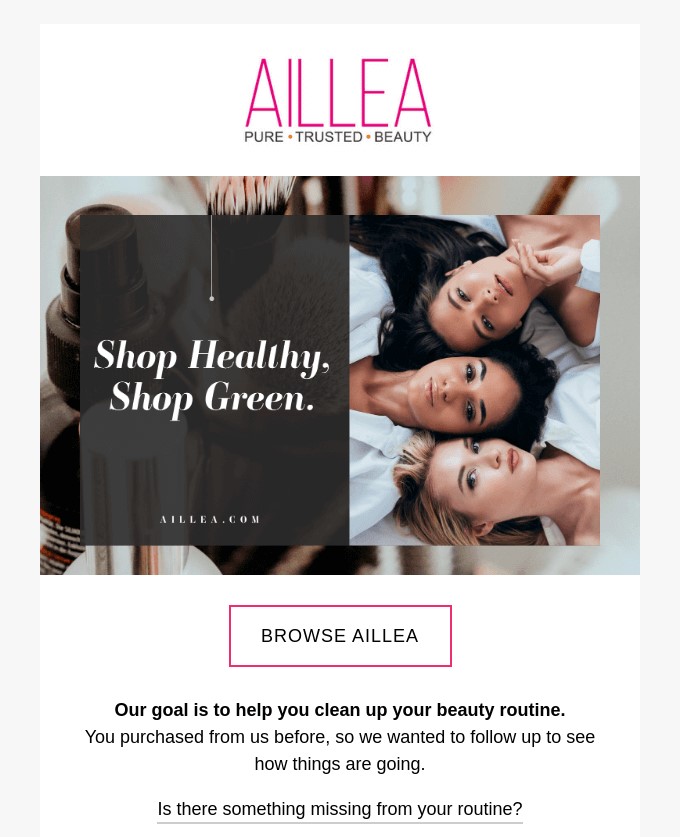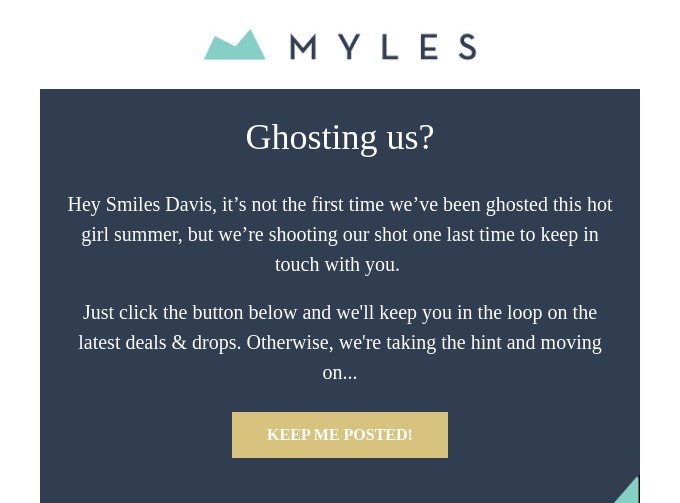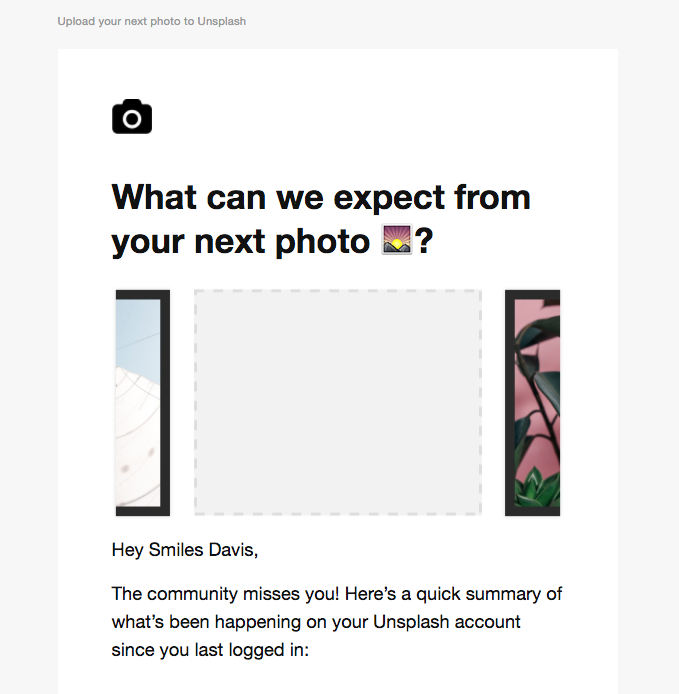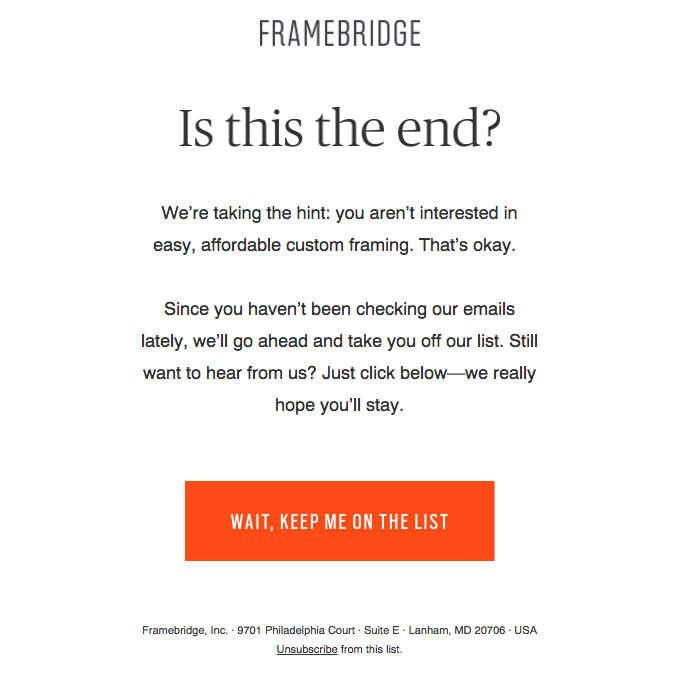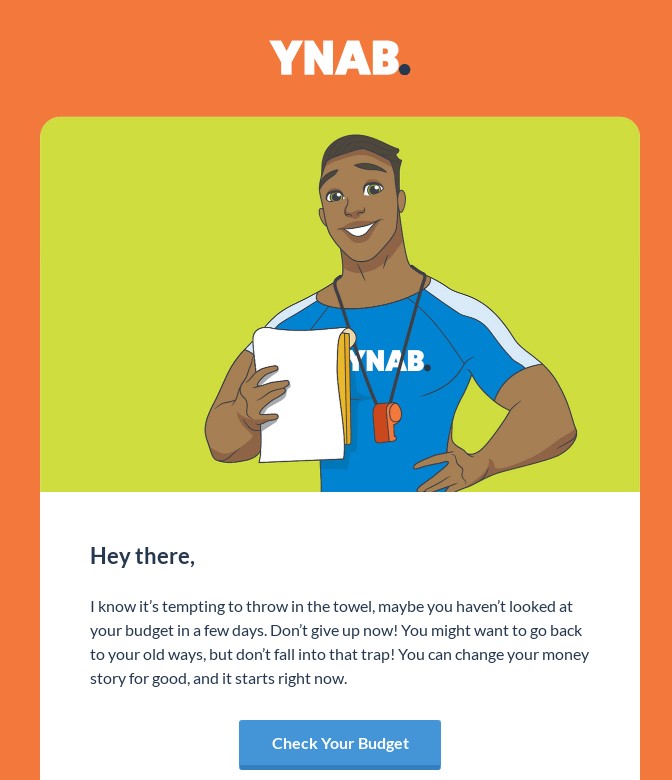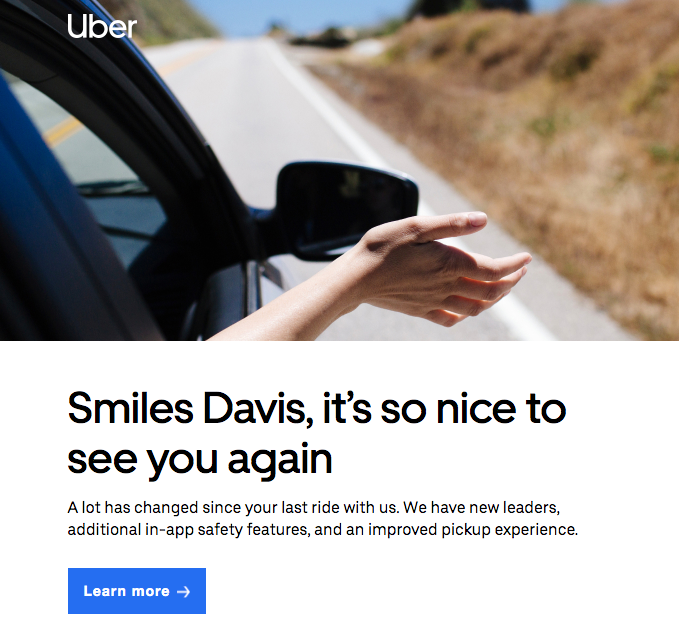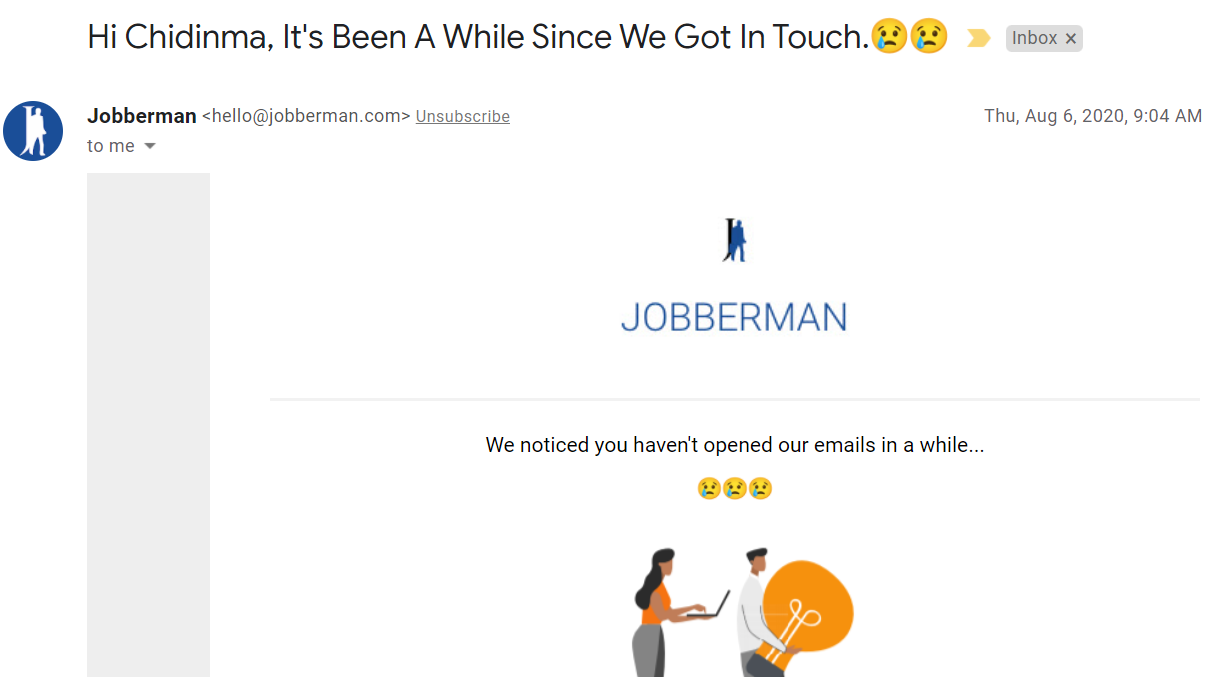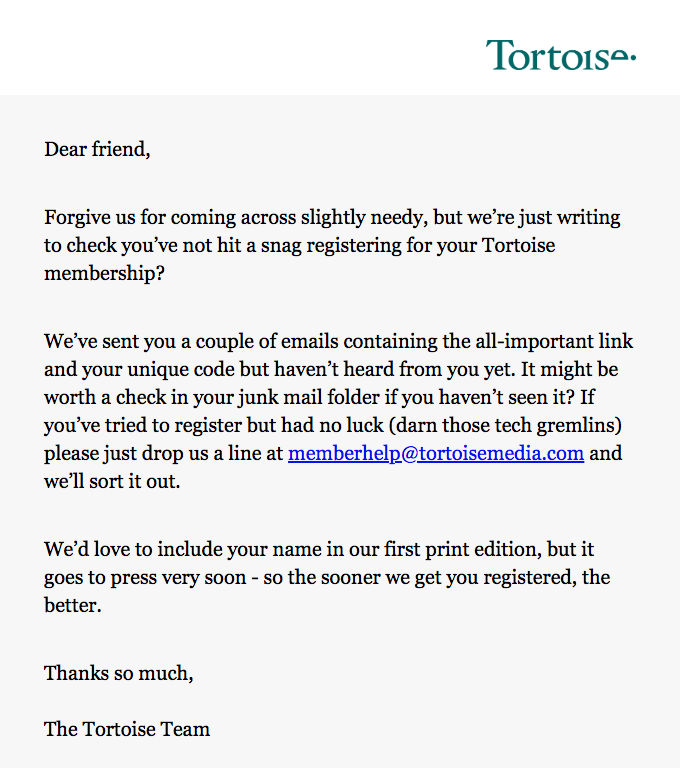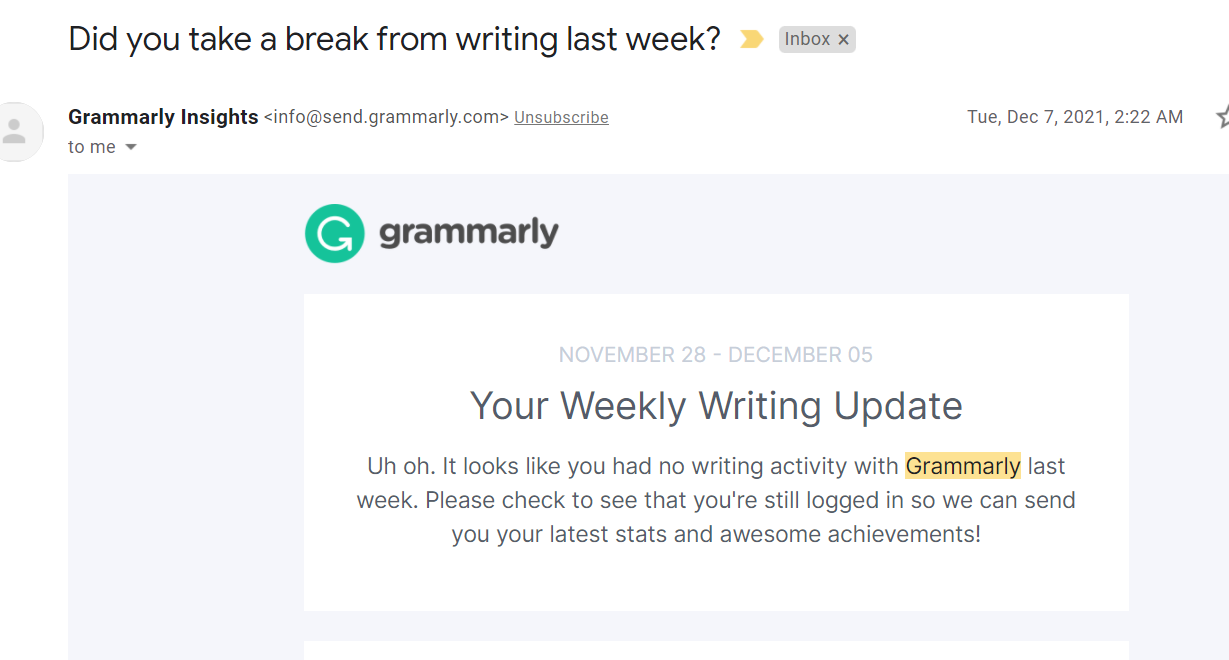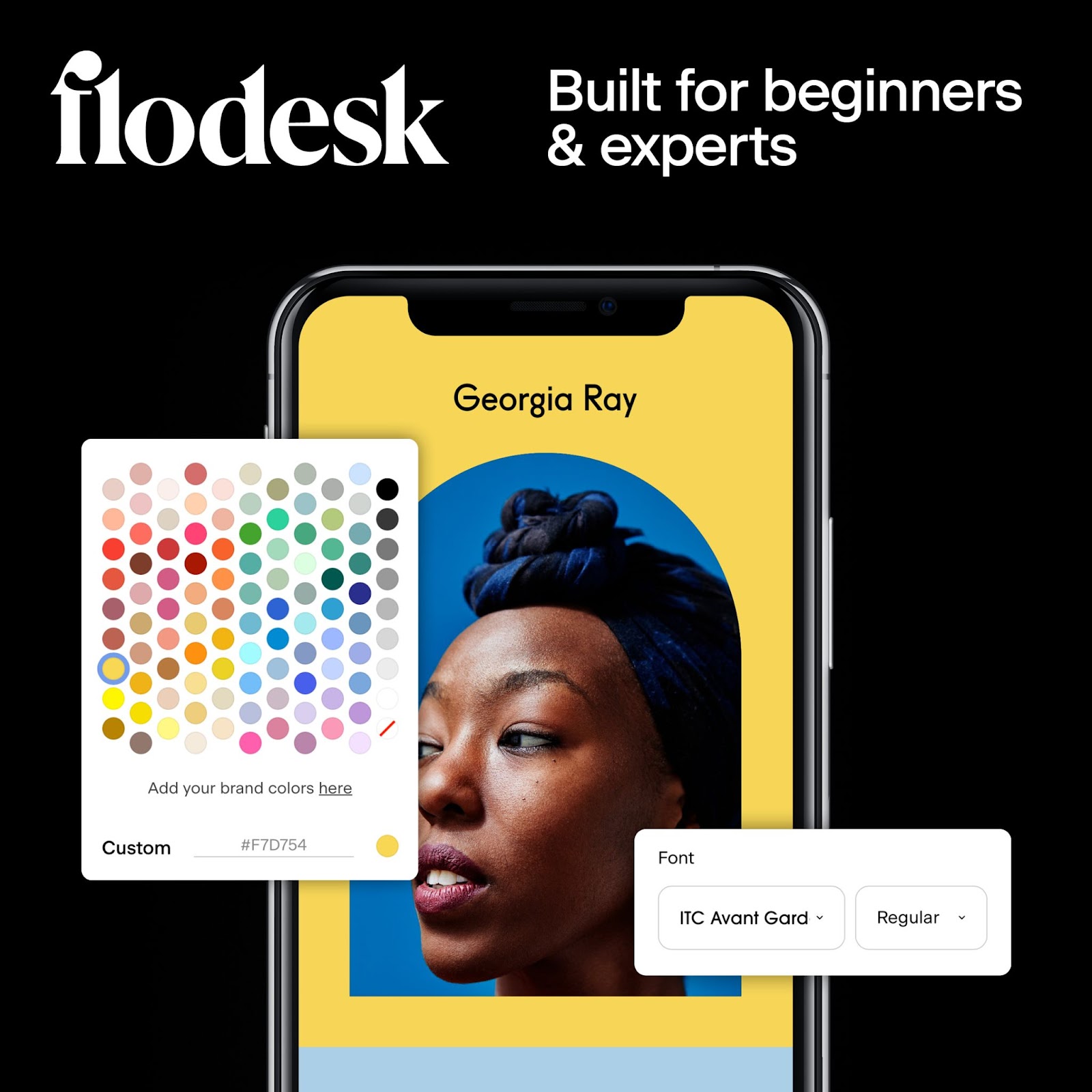15 Re-Engagement Email Subject Lines That Beg to Be Opened
Table of Contents Jump to:
Jump to:
Table of contents
You could write the best marketing emails and still have inactive email subscribers—that is, subscribers who signed up to receive your email newsletters but neither open nor engage with them. This can affect your deliverability, reduce sales conversions and increase your email marketing costs—most email marketing software providers charge based on the size of your list. (Hint: Flodesk doesn’t.)
While frequently pruning your email list of inactive subscribers is a best practice for email marketing, it’s also a good idea to try re-engaging them first. Re-engagement emails or win-back emails serve to nudge these subscribers and may help you win back a handful of them. According to a survey by Return Path, 45% of inactive subscribers who received a re-engagement email read a subsequent message.
But in order to get the most out of your re-engagement campaign, you’ll need to craft a killer subject line. One study found that 47% of email recipients open emails solely because of the subject line.
In this article, we’ll share some of the best practices for writing re-engagement email subject lines along with examples to inspire your own.
Get unlimited email sends and subscribers with Flodesk
We’ll never increase pricing because your email list is growing
The winning formula for re-engagement email subject lines
So, what exactly makes up a good subject line for re-engagement emails? Here are some best practices to get you started.
1. Keep it snappy
Short subject lines work best— the sweet spot is from 6 to 10 words. You want to provide enough information to inspire action. However, the longer your subject line gets, the higher the chances are that parts of it will be cropped out.
Even with a shorter subject line, there is still a risk of cropping on mobile devices. So, you should also make sure to put the most important words first.
2. Be clear
Getting creative with your subject line is great, but not at the expense of clarity. This is particularly important when writing win-back emails. This is your chance to re-engage an inactive subscriber—if the subject line is unclear, then your email is unlikely to get the reader to interact with your brand again.
3. Personalize it
Personalization works. One study has shown that targeted email marketing (and particularly personalizing your subject line) can boost open rates by up to 50%, and that emails that include the reader’s name in the subject have 7% higher open rates than those without.
How do you use personalization to your advantage? You can mention the recipient’s name or make them a personalized offer based on their past activity or purchase history. If you need more ideas, read 3 New ways to hyper-personalize your email marketing with Flodesk forms.
4. Create urgency
According to a study by Experian, emails that convey a sense of urgency have at least 14% higher click to open rates than those that don’t. Be sure to use time-sensitive words to urge recipients to take immediate action.
Tips for writing a great subject line
Now we know what a good email subject line looks like, but what should the content be? Here are some tips to guide you.
Remind them of why they signed up
Your inactive subscribers signed up for a reason, and you can hint at this in your subject line. Remind them of the pain points they wanted to solve or the solutions they came looking for when they first signed up. (Example: Still want [benefits]?)
Highlight what they are missing
The fear of missing out (FOMO) is a real thing. Nearly 7 in 10 millennials experience FOMO, and so do 56% of social media users. Use this to your advantage. In your subject line, highlight real benefits that the subscribers may be missing out on due to their inactivity.
Offer a discount
If a subscriber hasn’t read your emails for a long time, then you need to do something different to bring them back in. 75% of consumers actually scour their inboxes in search of relevant discounts, so making an irresistible offer is a great place to start.
Ask a thought-provoking question
Questions make us stop in our tracks. Research shows that people who ask questions, especially follow-up questions, are more likable than people who don’t. And re-engagement emails are follow-up emails.
Asking carefully framed questions based on the subscriber’s history may not only get you the much coveted open, but can also help you get valuable feedback from inactive subscribers.
Show some empathy
Subscribers become inactive for several reasons—life getting in the way, changes in priorities, or other personal problems. Here’s an interesting stat: 59% of all consumers feel that businesses have lost touch with the human element of customer experience. So, showing some empathy in your re-engagement could help you stand out in your subscriber’s inbox.
Get unlimited email sends and subscribers with Flodesk
We’ll never increase pricing because your email list is growing
15 best re-engagement email subject lines examples
Need inspiration to write your re-engagement email subject lines? Below are 15 examples that show you how you can apply what you’ve learned so far.
1. The “missed you” subject line
Subject line: We’ve missed you
Why this subject line from Aillea is effective:
- It’s simple and personal.
- It tugs at the recipient’s emotions.
Here are similar examples:
- Hey Annie, long time no see!
- Aching since you left.
- We need you.›
2. The “question-based” subject line
Subject line: Ooh, did you see this sale?
Why this subject line from An Indigo Day is effective:
- It asks a question that will pique the recipient’s interest and curiosity.
- The word “sale” creates a great incentive to read the email.
Here are similar examples:
- Did you forget?
- Missed the deal?
- Hey Dan, did you miss this?
3. The “get a discount if you come back” subject line
Subject line: Come back to get your Custom Plan for up to 90% Off
Why this subject line from Noom is effective:
- It offers a huge discount that is likely to get the subscriber interested.
- It’s highly personalized, offering the recipient a custom plan.
Here are similar examples:
- Get 20% off if you renew your subscription today.
- 75% off on your next order.
- Take 95% off: That’s how badly we want you back.
Read our favorite abandoned cart email subject lines for more niche inspiration!
4. The “apology” subject line
Subject line: I’m sorry it didn’t work out
Why this subject line from Beta List is effective:
- It’s personal and emotional.
- It shows empathy for the reader.
Here are similar examples:
- We’re sorry to see you go.
- Sorry I hurt your feelings.
- Pardon me if I said something wrong.
5. The “guilt trip” subject line
Subject line: Ghosting us?
Why this subject line from Myles Apparel is effective:
- It uses the word “ghosting” to draw attention.
- It encourages the reader to take action to avoid being impolite.
Here are similar examples:
- Are you ignoring me?
- Walking out on us?
- Giving us the silent treatment?
Get unlimited email sends and subscribers with Flodesk
We’ll never increase pricing because your email list is growing
6. The “long time” subject line
Subject line: It’s been a long time…
Why this subject line from Unsplash is effective:
- It’s simple and snappy.
- It reminds the recipient that they’ve been inactive for a long time.
Here are similar examples:
- Hey [name], you haven’t been around.
- Long time no see, [name].
- It’s been forever, [name].
This is a great intro option for the classic ‘Just checking in’ email!
7. The “creative” subject line
Subject line: Goodbyes are hard…
Why this subject line from Framebridge is effective:
- It plays with the reader’s emotions.
- It’s creative, which helps catch the person’s attention.
Here are similar examples:
- Forever is a long time.
- It’s hard to let go.
- Breaking up is never easy.
8. The “witty” subject line
Subject line: Where’d ya go?
Why this subject line from YNAB is effective:
- It’s playful and witty
- It asks the recipient a direct question.
Here are similar examples:
- Where’ve you been?
- Thinking of ditching me?
- Missing ya, [name].
9. The “is this helpful” subject line
Subject line: Are my emails helpful [Name]?
Why this subject line from Rankmath is effective:
- It’s personalized, and who doesn’t like a personalized email?
- It asks a thought-provoking, open-ended question.
Here are similar examples:
- Are we adding value?
- Are the [name] newsletters worth your time?
- [name], am I still relevant?
10. The “big changes” subject line
Subject line: Did you know we’ve made big changes in the last year?
Why this subject line from Uber is effective:
- It asks a question to pique curiosity.
- The mention of “big changes” might get inactive subscribers curious enough to open the email.
Here are similar examples:
- Did you know we did [x]?
- Hey [name], we have big gifts for long-time subscribers.
- We’ve got an upgrade you’ll like.
11. The “don’t lose your benefits” subject line
Subject line: Don’t let your miles expire
Why this subject line from American Airlines is effective:
- It reminds the recipient of the benefits they’ll miss out on.
- It gives a direct instruction.
Here are similar examples:
- URGENT—Don’t lose your [X] benefits.
- Action required! You’re about to lose [important benefits]
- Your [benefits] are expiring. Open this email to keep them.
12. The “warning” subject line
Subject line: Important: Your data is being deleted
Why this subject line from Other Goose is effective:
- It’s direct and to the point.
- Phrases like “important,” “your data” and “deleted” are sure to get the attention of inactive subscribers.
Here are similar examples:
- Hi, you are about to be removed from our site.
- Your account [name] will be deactivated tomorrow.
- Act now or you’ll be unsubscribed.
Get unlimited email sends and subscribers with Flodesk
We’ll never increase pricing because your email list is growing
13. The “been a while” subject line
Subject line: Hi [Name], It’s Been A While Since We Got In Touch 😢😢
Why this subject line from Jobberman is effective:
- It’s personalized.
- It uses the crying emoji to grab attention and pack in emotion.
Here are similar examples:
- Since last year [name], not a word [insert worried/ crying emoji]
- [worried emoji] [name], you’ve been silent.
- Hope all is well? It’s been a while.
14. The “reminder” subject line
Subject line: A reminder to register for your Tortoise membership
Why this subject line from Tortoise Media is effective:
- It’s straightforward and personal.
- It tells the recipient what they need to do, making it easy for them to make a decision.
Here are similar examples:
- A reminder to [action].
- Did you forget? You no longer [action].
- In case you forgot, we’re still here.
15. The “are you there” subject line
Subject line: Did you take a break from writing last week?
Why this subject line from Grammarly is effective:
- It asks an open-ended question related to the user’s activity.
- It mentions how long the recipient has been inactive, which may encourage the recipient to re-engage with your services.
Here are similar examples:
- Hello [name], what’s up?
- Knock knock, still with us?
- Still available for [event name]?
Win back your lost subscribers with re-engagement emails
Email marketing is hard enough already, but when you have inactive subscribers, the job only gets harder. By creating a well-planned re-engagement email campaign, including an eye-catching, welcoming subject line, you can reignite the interest of some of your inactive subscribers. Flodesk’s intuitive email builder makes it easy to create emails that people love to read while ensuring maximum deliverability.
